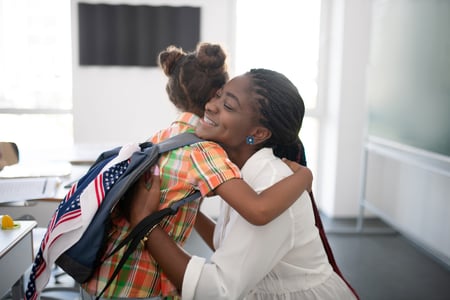
Can a classroom truly have a positive climate when the relationship between the teachers in that room is strained?
Emotional Support domain scores for CLASS® tend to be higher on average, and it is often noted that emotion is a large part of how many of us choose to work in early education: We love children! Nurturing young minds is our passion! We teach because we care!
In practice, I have observed that while much is said about how teachers feel about children, less attention is paid to how teaching teams behave toward each other. I have yet to hear a teacher say they pursued a career in teaching because they love working with other adults in classrooms or are passionate about collaborative co-teaching.
Truthfully, many classrooms feature significant adult-to-adult tension, which has a variety of sources (including, cultural differences, generational misunderstandings, resentments about credentials and promotion, etc.). When tension goes unaddressed, it detracts from positive classroom experiences. What do students learn from teachers that have trouble interacting with each other? We know that learning happens in the context of interactions, so when teachers model dysfunction, children learn something from that, too.
I first noticed the low positive (sometimes partially negative) climate between teachers when doing CLASS-based coaching in a room where both teachers were highly skilled but would not communicate beyond what was required. Each week I saw how both teachers showed strengths across all domains, but could barely be seen to make eye contact between the students’ arrival and lunchtime. They spoke to each other rarely, sometimes addressing each other through the students. It was not unusual to see either of them roll their eyes and mumble to themselves as the other walked away from one of their stilted conversations. As an observer, I wondered, ‘How do they behave when I’m *not* here watching?’ and more importantly ‘How is this impacting the students?’
It became clear that this was happening in many classrooms around the city; teachers were teaching alongside each other, not together.
They would spend the day ignoring each other until contact could no longer be avoided. As a coach, I could see that this reduced the teams’ abilities to communicate effectively and allowed students to slip through the cracks left by their silences: they didn’t check in with each other; didn’t verify information; didn’t remind, or inquire. This led to confusion and many missed opportunities for communication and positive role modeling.
Other negative impacts of these behaviors: they disrupt the unity of the classroom environment by limiting the teaching team’s ability to support each other and send a mixed message to students—do as we say, not as we do. How effective are positive climate strategies if teachers do not model them in real time? Turning our attention to this important issue may be key to creating learning environments that provide a more consistently positive, secure base for learning.
We often ask students to be braver than we are and take risks we are unwilling to take. Without role models for behaviors that build emotional connections, how can students trust us to care for them in these vulnerable places? Can we expect them to take us seriously when we say, “Tell them how you feel about that,” if they see us avoiding direct conversation with each other daily? Strong skills require regular practice, and teachers must practice building a strong framework for positive interactions and communications.
Reflective Questions for Building Stronger Teacher Relationships
Let’s consider the Positive Climate indicators, and think about ways to encourage these behaviors among adults. This can be a useful practice for supervisors and teachers alike. Here are some reflective questions to help you build stronger relationships among teachers.
- How are you building relationships with your fellow teachers? Do students often see you supporting each other in the classroom?
- How are you displaying positive affect in your interactions with other teachers? Do classroom interactions between teachers regularly demonstrate enjoyment or warmth?
- Are communications between teachers positive? Do teachers express kindness or affection to each other when appropriate?
- Do interactions between teachers convey respect? Do teachers make eye contact, speak calmly and respectfully, and cooperate with each other when the need arises?
Key role models in the classroom must demonstrate relationship building, positive communication, positive affect, and respect between them. This is what it means to be a role model—demonstrated behaviors are part of a teaching team’s toolkit.
Early education is a tough business. It is fast-paced, physically demanding, and emotionally taxing. It is easy to accumulate misunderstandings and hurt feelings in this environment. It can be challenging to dig out of those situations by having honest-yet-potentially-awkward conversations. However, as we understand the value of setting aside time for lesson planning and observation, we must also understand the value of cultivating a Positive Climate among teaching teams.
When classrooms are observed, scoring decisions are not based on what teachers feel or intend, but rather on what is seen. Looking for and expecting behaviors that support positive interactions among teachers will support the success of teachers and students.

Atena Danner is an early childhood education coach and trainer who works primarily with Head Start teachers in Chicago, IL. She is a parent, artist, writer and seeker of justice. She is a Teachstone Guest Blogger.
